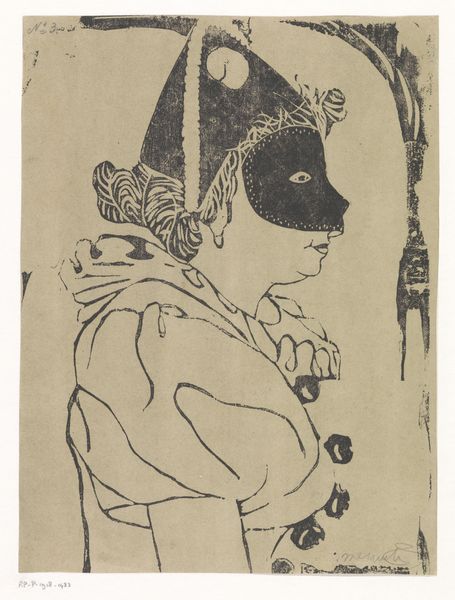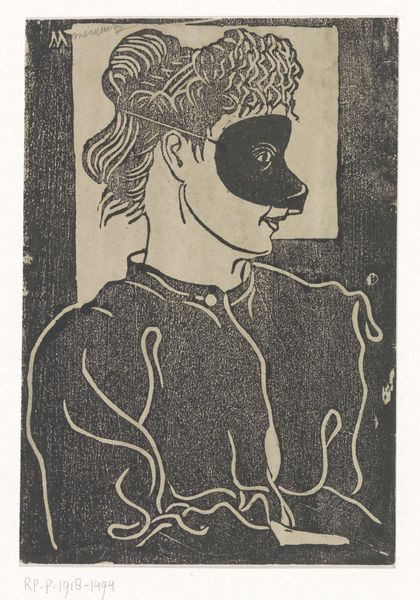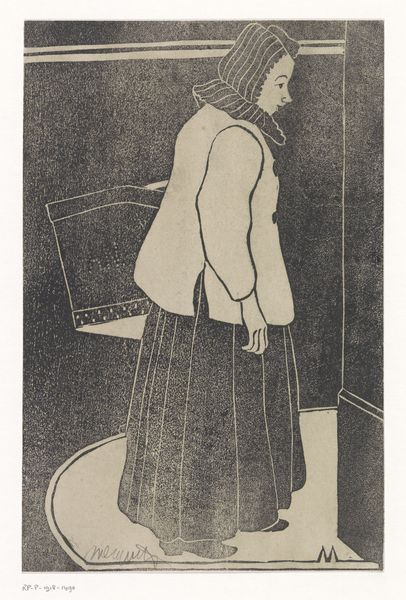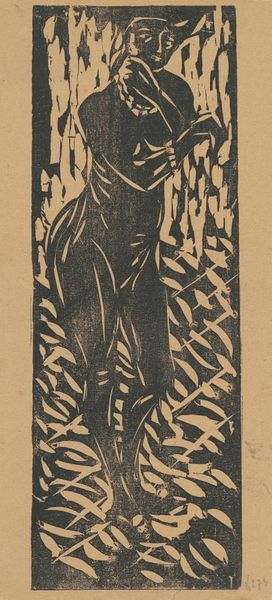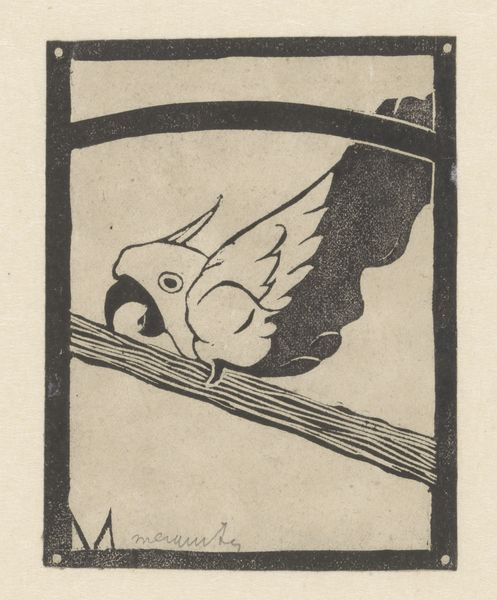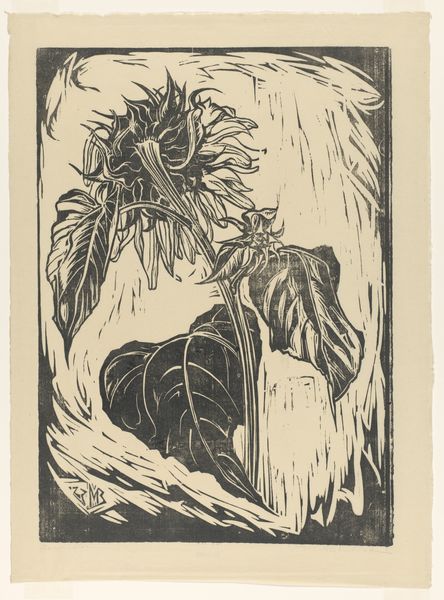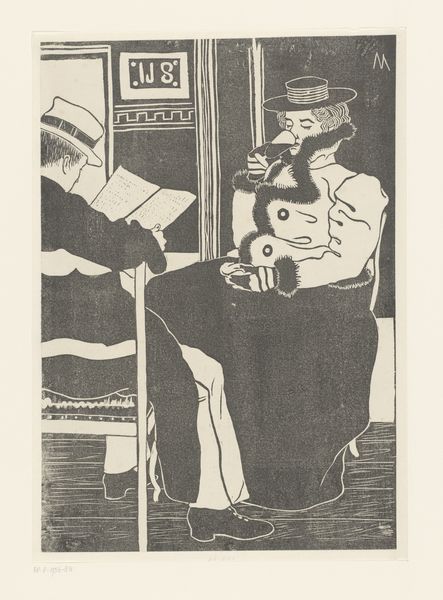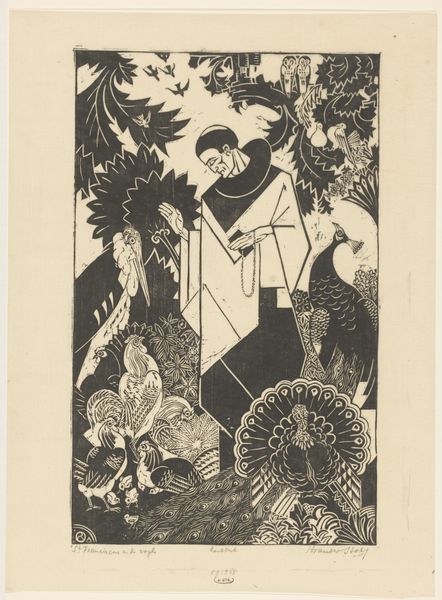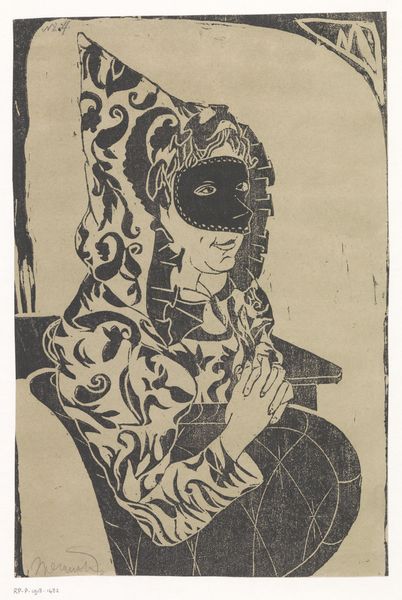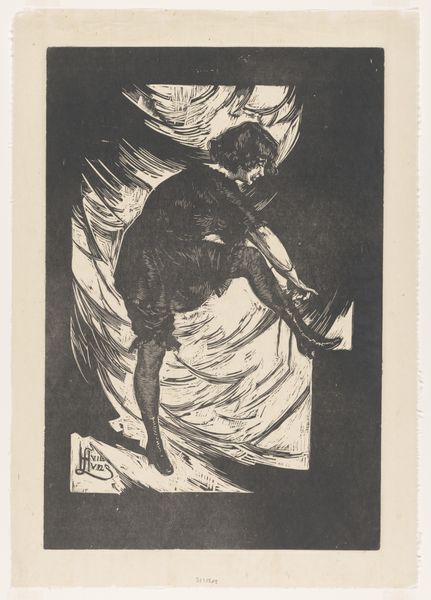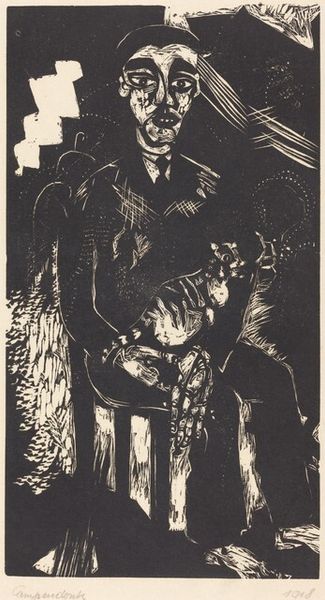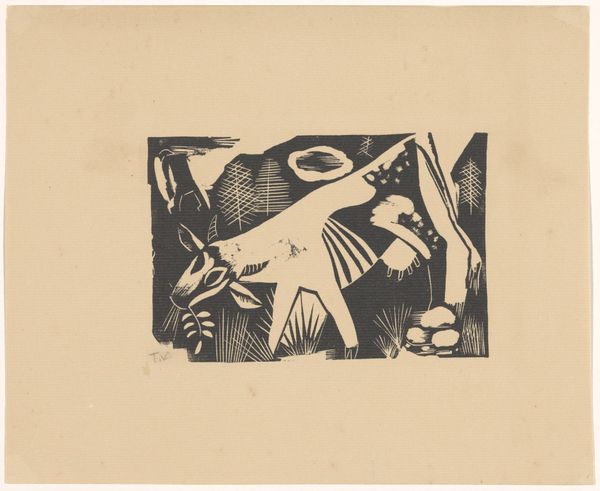
graphic-art, print, linocut, woodcut
#
portrait
#
graphic-art
# print
#
linocut
#
caricature
#
figuration
#
linocut print
#
woodcut
#
symbolism
Dimensions: height 247 mm, width 170 mm
Copyright: Rijks Museum: Open Domain
Curator: Let’s turn our attention to Samuel Jessurun de Mesquita’s striking linocut from around 1899, titled "Profile with Hat and Mask." Editor: There's a powerful starkness here, isn’t there? The heavy lines create this immediate sense of theatrical darkness—almost like a commentary on identity through constructed performance. Curator: Exactly. De Mesquita’s choice of linocut is so crucial; it facilitated bold forms and dramatic contrast. We should remember that graphic arts were experiencing a revival at the turn of the century. Woodcuts and linocuts were embraced as democratic mediums, pushing art beyond elite circles to a broader public, influenced by Japonisme, offering avenues for social commentary. Editor: Masking, particularly within contexts such as Carnival or masquerade balls which served not only celebratory but at times subversive purposes. I see an intriguing exploration of secrecy, visibility, and power dynamics – especially within the socio-political landscape of the period. Is it commentary on the facade that society expects us to perform? Curator: Possibly. Mesquita utilized this reductionist, graphic vocabulary to construct an image reflecting the societal shifts toward symbolism and self-expression. The materiality allows for infinite reproductions – making it easily distributable and allowing for broader reception of these ideals of freedom, questioning social expectations and challenging the established hierarchy of traditional portraiture. Editor: Thinking about it as caricature broadens that critique even further, almost skewering the idea of bourgeois self-portraiture. And I wonder too about the gendered element – what societal expectations is this figure subject to, and what does masking allow for them? Curator: Those are important avenues for consideration. By focusing on printmaking and the symbolism style, de Mesquita engages the production, reception, and contextual elements beyond solely pictorial representation. Editor: Agreed. Viewing the work today highlights the enduring relevance of discussions around performativity and socio-political expectations. Curator: Indeed, and it is that emphasis on both making and societal reflection that keeps it powerfully relevant.
Comments
No comments
Be the first to comment and join the conversation on the ultimate creative platform.
